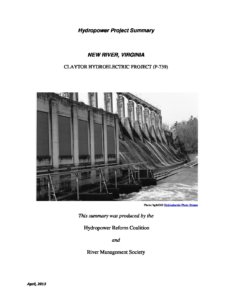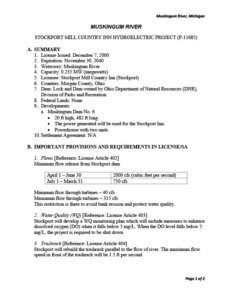Eel River Dams License Expires, Opening Long Road to Dam Removal
Today marks the beginning of the end for two antiquated hydropower dams on the Eel River, one of the largest whitewater river systems in California. The federal license for Pacific Gas and Electric’s Potter Valley Project expires today, and the utility has decided that it no longer wants to own and operate the hydropower project. Scott and Cape Horn dams are now on track to be decommissioned and removed. Once this is complete, the Eel will become the longest free-flowing river in California, running from the high peaks of the Coast Range to the magnificent redwoods on the Pacific Coast.
As the third largest watershed in the state, the Eel has an abundance of whitewater that is primarily fed by abundant winter rains. The removal of the two dams on the upper mainstem Eel will reveal new whitewater runs that have been inundated beneath Pillsbury Reservoir since 1921. Dam removal will also improve water quality on 169 miles of boatable runs as the river winds its way to the ocean. This is a big victory for the struggling salmon, steelhead, and lamprey runs and the people and communities that depend on them, including the Wiyot people, the original inhabitants of the watershed.
Expectation of Long Delays Before Dam Removal
Although the expiration of the dams’ license is a milestone, it also highlights a problem: it will likely take 20 years for the Federal Energy Regulatory Commission (FERC), the federal agency that licenses hydropower dams, to clear the path for dam removal. While FERC has very specific processes for licensing hydropower dams, it has no defined process for removing them and consequently, every dam removal is handled differently and each takes much longer than necessary. Eel River dam removal is expected to take so long that PG&E is investing millions of dollars into its defunct hydropower project–which isn’t even currently operating–so that it can fully profit from power generation for as long as it takes to get the dams out.
American Whitewater is beginning its work to help secure Eel River dam removal at the project level, and we are also working at the national level to ensure that FERC fixes its broken process for decommissioning and dam removals so we can restore our nation’s rivers without excessive bureaucratic delay.
Earlier this month, American Whitewater partnered with other river conservation organizations, tribes, and the hydropower industry to send Congress a package of reforms to the Federal Power Act, the law that governs hydropower licensing. Our proposed reforms aim to increase opportunities for public input on hydropower decommissioning and to speed up the process. They include:
1. A public report prepared by the owner of the project to analyze alternatives for project disposition,
2. Opportunities for the public and organizations like ours to be a participant in the process and provide alternatives,
3. Development of a schedule for hydropower license surrender proceedings with an evaluation of ways to expedite the process.
Twenty years ago, American Whitewater collaborated with the river conservation community and the hydropower industry to make improvements to the hydropower licensing process. This led to a new licensing process that provides us with greater capabilities to advocate for rivers, more certainty for the project licensee, and a faster timeline. We believe it is past time to bring a similar level of discipline and efficiency to the license surrender and decommissioning process. Removing outmoded hydropower projects like the Elwha dams, Condit Dam on the White Salmon, and Klamath River dams has taken over 20 years. This level of delay is unacceptable for the Eel River and we will be working with Congress to address this.
Scott Harding
E-mail: scott@americanwhitewater.org


